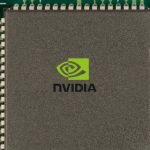The recent introduction of the Memory-Augmented Large Multimodal Model (MA-LMM) revolutionizes long-term video modeling by addressing significant limitations faced by other large language models (LLMs). MA-LMM utilizes a strategic online processing approach, sequential frame analysis, and a memory bank feature. This innovative architecture not only conserves GPU memory but also effectively bypasses previously encountered context length restrictions, making it exceptionally suited for extensive video sequences.
Over time, the integration of LLMs with visual encoders has been a focal point for enhancing multimodal tasks. While LLMs like LLaMA, LLaVA, and BLIP-2 showed potential, they were hampered by token limitations and memory constraints, particularly when processing longer video content. Attempts to remedy these issues, such as VideoChatGPT’s average pooling and Video-LLaMA’s added querying transformer, either fell short in performance or proved impractical for real-time analysis.
How Does MA-LMM Work?
MA-LMM stands out with its architecture consisting of a visual encoder, a trainable querying transformer (Q-Former), and a large language model. The model processes video frames in a sequential manner, with a long-term memory bank efficiently retaining discriminative information. A compression technique helps to maintain the relevance of the memory bank’s content, facilitating a significant reduction in GPU memory requirements during training. These innovations allow MA-LMM to decode text adeptly while accommodating extensive contextual information.
What Challenges Does MA-LMM Overcome?
The challenges of context length and GPU memory in multimodal video understanding are adeptly addressed by MA-LMM. Its design caters to sequential processing and dynamic integration of visual and textual data. By storing frame features in the memory bank, MA-LMM ensures that pertinent historical data influences current and future interpretations, a capability that previous models lacked, thus marking a significant advancement in the field.
What Does the Research Indicate?
A scientific paper from researchers at the University of Maryland, Meta, and Central Florida, titled “Memory-Augmented Large Multimodal Models for Efficient Long-Term Video Modeling,” published in the journal ArXiv, closely relates to MA-LMM’s breakthrough functionalities. The paper elucidates the model’s proficiency in various tasks, including long-term video understanding and online action prediction, positioning MA-LMM at the forefront of multimodal AI research.
Useful Information for the Reader
- MA-LMM introduces a long-term memory bank for video sequence modeling.
- Efficiently processes frames sequentially, minimizing GPU memory use.
- Proven superior in tasks like video captioning and action prediction.
In conclusion, MA-LMM epitomizes a significant shift in the landscape of multimodal AI, bridging gaps that have long hindered the field. Its capability to sequentially process long video content while retaining contextual integrity heralds a new era of video analysis. The model’s versatility and efficient GPU memory usage underscore its potential to become a staple in various applications, from entertainment to surveillance, where understanding the temporal dimension of videos is paramount.










